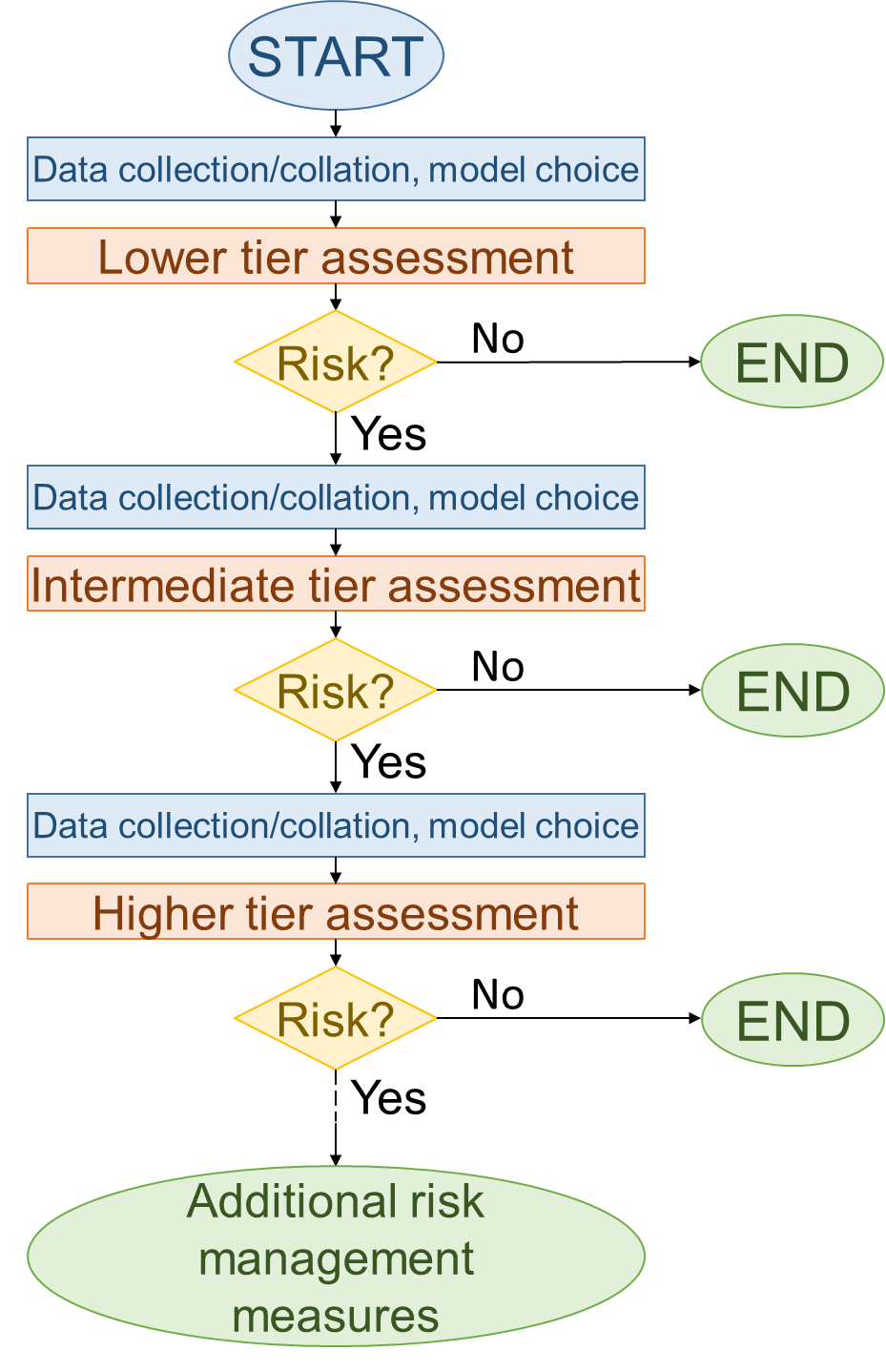Workflow for a tiered exposure assessment
An environmental exposure assessment for a chemical is an exercise to predict the concentrations of that chemical in the environment, and sometimes within organisms, as a result of its use by humans.
Environmental exposure assessments are typically conducted as a component of an environmental risk assessment. The projected exposure concentrations (PECs, Predicted Environmental Concentrations) are combined with hazard assessment outcomes (e.g. PNECs, Predicted No–Effect Concentrations) to provide assessments of the chemical risk.
The specific purpose of an environmental exposure assessment varies widely, but broadly falls into one of two categories:
• Screening level assessment, to rapidly determine whether or not the chemical may pose a risk to the environment and thus requires more in–depth assessment;
• High level assessment, to predict exposure using a level of model realism concomitant with the scientific state of the art.
For the purposes of chemical safety assessment, it is typical to perform an exposure (and hazard) assessment in a tiered fashion.
The essence of a tiered approach is to assess exposure (and hazard) using progressively more complex approaches. If a simple(r) approach suggests that the chemical poses no significant risk, then there is no need to move to the next tier - the assessment ends. This is efficient because performing a full exposure assessment, in the greatest detail possible, can be time consuming and require large amounts of data. If a simpler assessment can demonstrate no risk, then there is no need to perform more complex assessments.

Figure 1. Generalised workflow for three tier exposure assessment framework
The diagram (Figure 1) sets out the generic structure of a tiered approach. It comprises a repeating cycle of data collection and collation and model choice prior to assessment, followed by the assessment itself and an appraisal of whether risk is indicated. At any stage, if no significant risk is indicated, the assessment process concludes with this conclusion. If significant risk remains at the final tier, a number of options (such as the implementation of additional risk management measures for the chemical) may be specified. The specific measures will depend upon the overall purpose of the assessment process.
The number of tiers in an assessment framework is flexible and can be specific to the purpose of the assessment as well as the nature of the chemical under assessment. For demonstration purposes, a three-tier framework is used here:
NanoFASE exposure assessment: Low tier simple worst case assessments using hand calculations |
NanoFASE exposure assessment: Intermediate tier assessment using SimpleBox4Nano |
NanoFASE exposure assessment: Higher tier assessment using the NanoFASE WSO model. |
An illustration of each of these three tiers is given in the following presentations, using the example of TiO2 applied as a road coating in the Thames Catchment. The scenario is introduced in the lower-tier slide show, and it is intended that they are read sequentially.
Find detailed guidance and the fully worked example here.
Read more |
|
Tiered exposure assessment: Detailed NanoFASE guidance.
|
Contact

Stephen Lofts
Centre for Ecology and Hydrology (CEH)
Email: stlo@ceh.ac.uk

Joris Quik
RIVM, Netherlands
Email: joris.quik@rivm.nl

Sam Harrison
Centre for Ecology and Hydrology (CEH)
Email: sharrison@ceh.ac.uk
